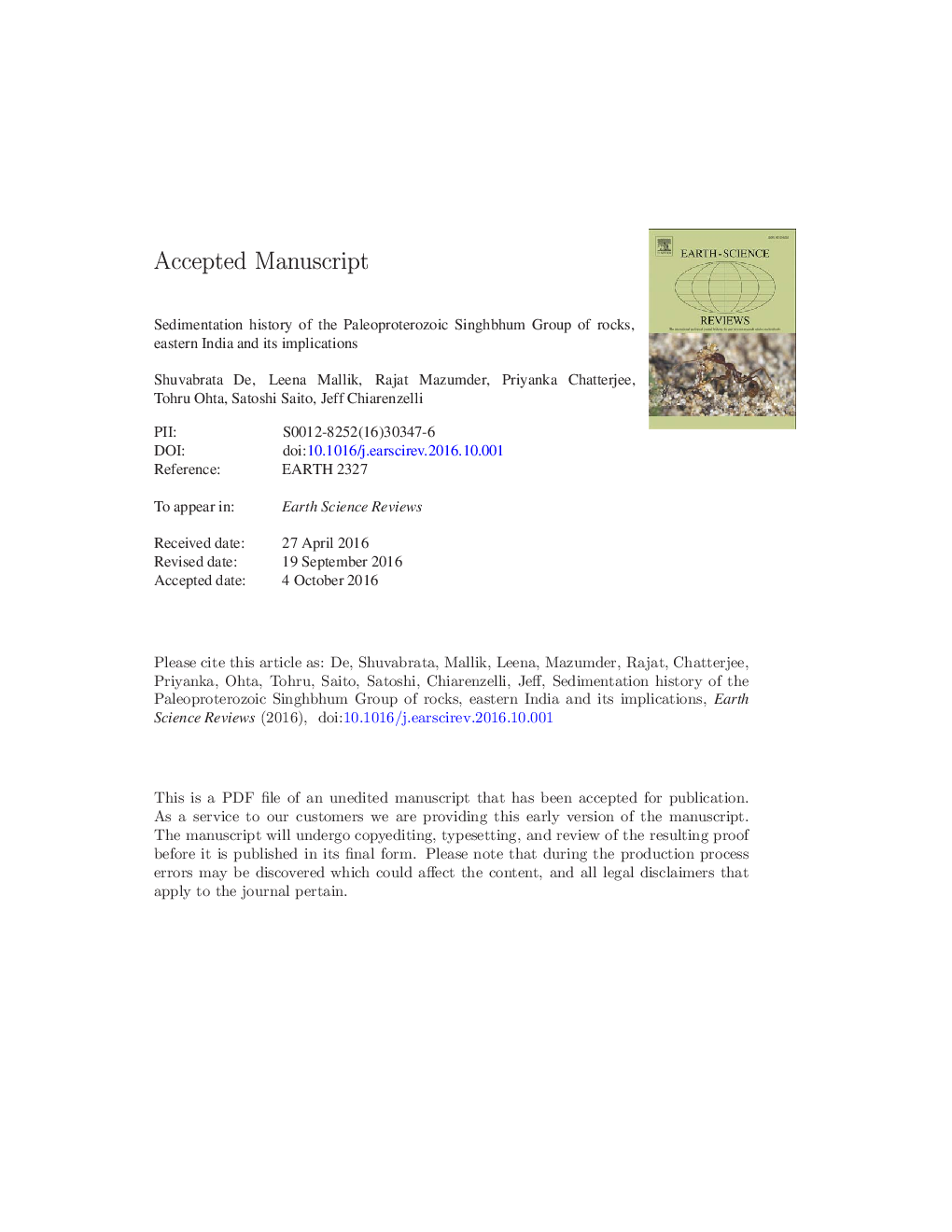| Article ID | Journal | Published Year | Pages | File Type |
|---|---|---|---|---|
| 6442747 | Earth-Science Reviews | 2016 | 63 Pages |
Abstract
In significant contrast, the overlying Dhalbhum Formation is dominated by finer clastics with much lower proportion of sandstones. The base of the terrestrial Dhalbhum Formation is a sequence boundary (unconformity). Sedimentary facies analysis clearly shows two broad facies association of terrestrial origin (fluvial and aeolian). The aeolian facies association overlies the fluvial facies association. The Dhalbhum sandstones show typical REE pattern of quartz dilution with lower concentrations compared to the mudstones. The Dhalbhum finer clastics mimic typical REE patterns resembling abundances in the continental crust. Rare earth element plots display a good match with Post-Archean Australian Shales (PAAS) including similar concentrations, steep negative slope for LREEs, negative Eu anomaly, and nearly flat HREES. The Singhbhum Paleoproterozoic succession is devoid of both chemical sediments and Paleoproterozoic glacial deposits in contrast to neighboring cratons.
Related Topics
Physical Sciences and Engineering
Earth and Planetary Sciences
Geology
Authors
Shuvabrata De, Leena Mallik, Rajat Mazumder, Priyanka Chatterjee, Tohru Ohta, Satoshi Saito, Jeff Chiarenzelli,
